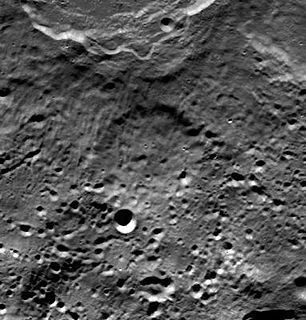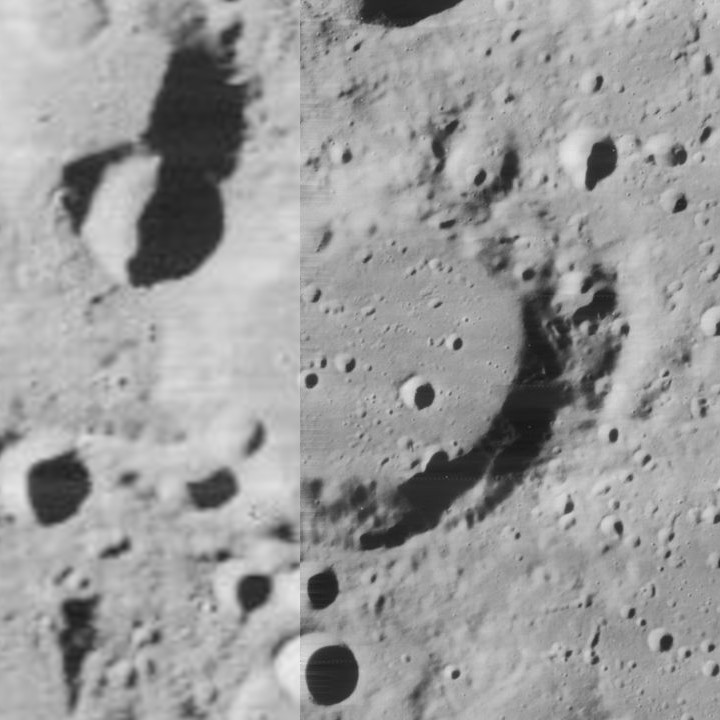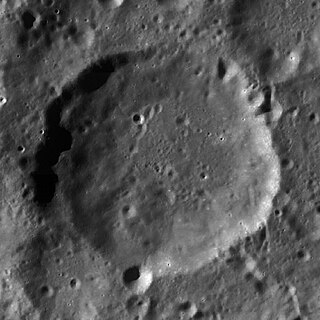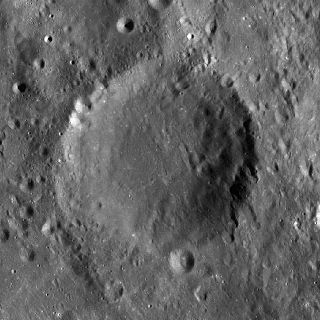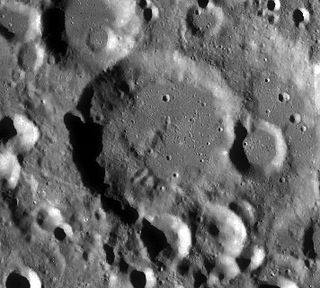 LRO image | |
| Coordinates | 3°12′S37°24′E / 3.2°S 37.4°E Coordinates: 3°12′S37°24′E / 3.2°S 37.4°E |
|---|---|
| Diameter | 12 km |
| Colongitude | 324° at sunrise |
| Eponym | Louis Leakey |


Leakey is a small, undistinguished lunar impact crater that is located in an area of rough terrain in the eastern part of the Moon. It was named after British archaeologist Louis Leakey. [1]
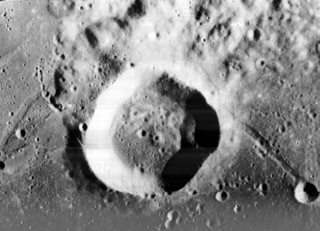
Lunar craters are impact craters on Earth's Moon. The Moon's surface has many craters, almost all of which were formed by impacts.

An impact crater is an approximately circular depression in the surface of a planet, moon, or other solid body in the Solar System or elsewhere, formed by the hypervelocity impact of a smaller body. In contrast to volcanic craters, which result from explosion or internal collapse, impact craters typically have raised rims and floors that are lower in elevation than the surrounding terrain. Impact craters range from small, simple, bowl-shaped depressions to large, complex, multi-ringed impact basins. Meteor Crater is a well-known example of a small impact crater on Earth.
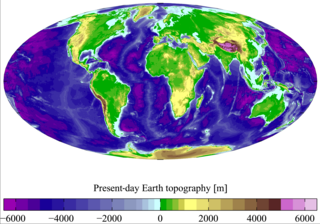
Terrain or relief involves the vertical and horizontal dimensions of land surface. The term bathymetry is used to describe underwater relief, while hypsometry studies terrain relative to sea level. The Latin word terra means "earth."
The immediate area is not notable for crater features, although some distance to the southwest is the crater pair of Capella and Isidorus. In the surface between this pair and Leakey is a system of rilles designated the Rimae Gutenberg that follow a course to the southeast.

Capella is a lunar impact crater 49 km (30 mi) in diameter that lies to the north of the Mare Nectaris, in a rugged region with many small impact craters. It was named after Roman astronomer Martianus Capella. It intrudes slightly into the eastern rim of the crater Isidorus, a feature only slightly smaller in diameter.

Isidorus is a lunar impact crater that is located to the north of the Mare Nectaris, on the eastern half of the Moon's near side. It was named after Spanish astronomer Saint Isidore of Seville. It forms a pair with the slightly larger Capella, which is attached to the east-northeastern rim. To the west-southwest across the lunar mare are Mädler and the prominent Theophilus.

Rille is typically used to describe any of the long, narrow depressions in the surface of the Moon that resemble channels. The Latin term is rima, plural rimae. Typically a rille can be up to several kilometers wide and hundreds of kilometers in length. However, the term has also been used loosely to describe similar structures on a number of planets in the Solar System, including Mars, Venus, and on a number of moons. All bear a structural resemblance to each other.
Leakey is a circular, bowl-shaped formation that is symmetrical and not significantly eroded. The inner walls slope down to a ring of low albedo material having a diameter about half that of the crater. The rim is not notably eroded and the crater has no other features of interest.

Albedo is the measure of the diffuse reflection of solar radiation out of the total solar radiation received by an astronomical body. It is dimensionless and measured on a scale from 0 to 1.





